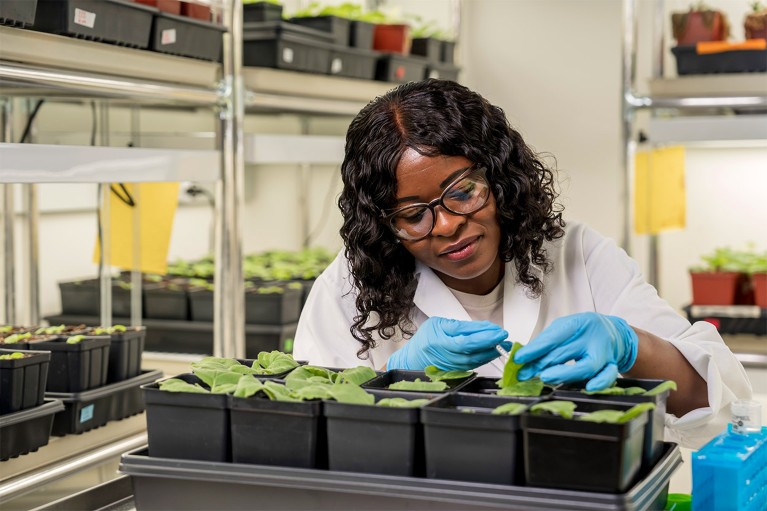I became deaf after a high malarial fever when I was three. I was living in Sierra Leone, but, at age 12, my parents sent me to the United States to be adopted by a family friend. Before learning American Sign Language at 15, I communicated in gestures and relied on advocates at school.
I attended the National Technical Institute for the Deaf in Rochester, New York, where I earned an associate degree in laboratory sciences and later a bachelor of science in biochemistry. In 2017, I began my PhD at the University of Tennessee in Knoxville. I first applied to work in a laboratory at the university conducting targeted cancer-therapy research but I was rejected. After that, I applied only to labs that had already worked with deaf students, and that’s how I met Tessa Burch-Smith, a plant biologist at Tennessee who was studying how plant cells communicate with each other. I thought it was the perfect field for me: I’ve also had to find ways to communicate to survive.
NIH faces calls to change its ‘ableist’ mission statement
My PhD research has focused on the effects of hormones on plant–pathogen interactions. Plants have pores that cut through their cell walls to facilitate the movement of signalling molecules, such as hormones. In this image, I’m injecting a genetically engineered virus into a Nicotiana benthamiana plant to silence specific genes involved in intercellular communication.
Tessa made sure I had all the resources I needed as a deaf PhD student. At the Donald Danforth Plant Science Center in St Louis, Missouri, where the lab is now based, I have interpreters available, and barriers to visual communication have been removed — for example, my colleagues wear clear masks so that I can read facial expressions. My colleagues have learnt to use sign language or are happy to write text on their phones. Most importantly, I am treated as an equal.
In May 2023, I believe I became the first Black Deaf woman to receive a PhD in any scientific, technical, engineering or maths discipline in the United States.


 NIH faces calls to change its ‘ableist’ mission statement
NIH faces calls to change its ‘ableist’ mission statement
 Academia’s ableist mindset needs to change
Academia’s ableist mindset needs to change
 A Jamaican medicinal-plant scientist explores his African roots
A Jamaican medicinal-plant scientist explores his African roots





